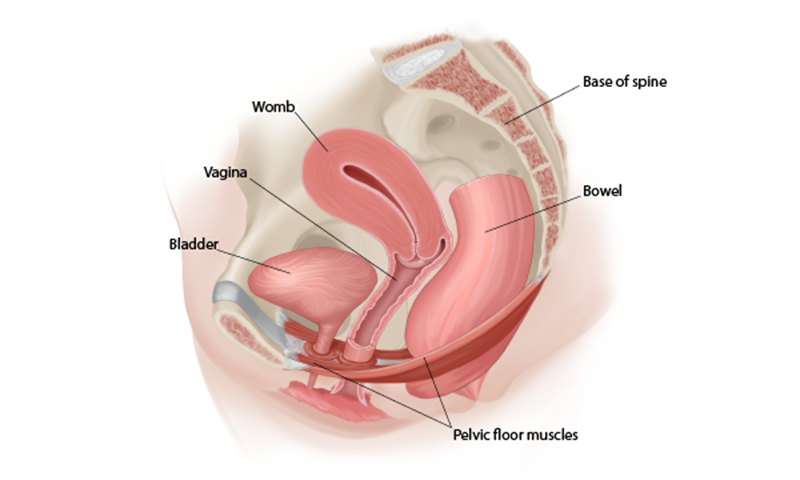How to look after your pelvic floor
Having strong pelvic floor muscles means you’ll be less likely to have issues like stress incontinence after your baby’s born.
What pelvic floor muscles do

Your pelvic floor muscles form a broad supportive sling from the front to the back of your pelvisPublic Health Scotland
Your pelvic floor muscles:
- help control your bladder and bowel
- hold your bladder, womb and bowel in place
- are important for your sex life
They form a broad supportive sling from the front to the back of your pelvis.
How these muscles change during pregnancy
Your pelvic floor muscles support your growing baby during your pregnancy. They then stretch during labour. This can make them weaker and they may not work as well as they did before your baby was born.
Weaker pelvic floor muscles can cause:
- stress incontinence, which is when urine leaks out when you cough, sneeze, run or laugh
- less sensation when you’re having sex
- a prolapse, which is when one or more of the organs can press against the vaginal walls causing a bulge
Exercising these muscles can make them stronger, and you’ll be less likely to have issues like stress incontinence after your baby’s born.
Pelvic floor muscle exercises
You can do pelvic floor exercises anywhere and no one will know.
You might have heard you can do pelvic floor exercises while you’re passing urine. This can stop you from emptying your bladder properly, so don’t do them when you’re on the toilet.
Pelvic floor muscle contraction
A pelvic floor muscle contraction is a squeeze and lift feeling, closing and drawing up the back and front passages.
To do this exercise:
- lie, sit or stand with your knees slightly apart
- tighten up your back passage as though you’re trying to stop yourself passing wind
- tighten the muscles that you would use to stop yourself passing urine
Don’t clench your buttocks, hold your breath or squeeze your legs together when you’re doing them.
Quick and slow contractions
For slow contractions:
- Squeeze and lift your pelvic floor muscles as hard as you can and try to hold for up to 10 seconds – if you can’t do 10 seconds, do as much as you can and build up to it
- Relax fully for 4 seconds
- Repeat up to 10 times
For quick contractions:
- Quickly tighten up your pelvic floor muscles and hold for 1 second
- Relax fully for 4 seconds
- Repeat up to 10 times
Do some slowly and some quickly to get the most out of these exercises.
When to start these exercises
Now’s a great time to start these exercises if you haven’t been doing them.
Try to get into the habit of doing these exercises every day. To make it easier, try to link them with something you do regularly, such as brushing your teeth or watching TV.
If you find them difficult or you need advice, speak to your midwife or an obstetric physiotherapist, or contact your local maternity hospital.
Further information, other languages and alternative formats
Translations and alternative formats of this information are available from Public Health Scotland.
If you need a different language or format, please contact phs.otherformats@phs.scot.
Last updated:
14 December 2023

